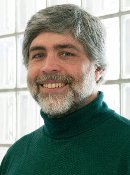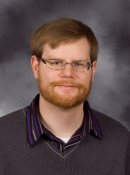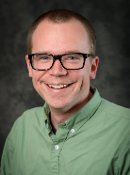
Dean Bruce Seely of the College of Sciences and Arts has chosen to recognize David Olson, a senior lecturer in mathematical sciences as the final Dean’s Teaching Showcase member for spring 2015.
Dean Seely commented on this selection by saying, “Up to this point I have selected younger faculty whose ideas and approaches seem naturally to align with the national patterns of past practices in the class room. For the third selection, however, I am focusing on a person whose demonstration of sustained excellence in teaching and instruction should motivate everyone–David Olson. He has been a leader in teaching in a department noted for excellence. He has taken on the task of adding the necessary knowledge and the external certifications of the Society of Actuaries (SOA) that allow him to guide the department’s actuarial sciences concentration. He has helped advise majors and served on numerous curricular committees. But the most important reason for recognizing Olson is the length of time he has been so good.”
Olson’s initial reaction to Seely’s nomination was “Yikes, I’ve been here 20 years. How did that happen?” But his second reaction was more serious and significant, for it signals the reality of the challenge university faculty face in the classroom. “Teaching technology is progressing so rapidly that I’m hopelessly far behind,” he noted, before adding “If anyone is not hopelessly far behind, they’re not paying attention. I’m sometimes on the bleeding edge, like when Canvas came out, but mostly I look for items where the process just got simpler, like recording class for student-athletes. BIG change, and one that will make it much easier to put together videos.”
Seely sees this technology question as “an obvious conundrum for faculty today.” He and Olson agree that it’s not enough just to know “what the newest ideas and approaches are.” Instructors need to find out “…which ones make sense for the needs at Michigan Tech.” Seely emphasizes, “Novelty for its own sake almost never makes sense in such a dynamic environment. DavidO’s key understanding is that technology needs to facilitate student learning.”
In order to help with this process, Olson focuses on interaction. “My biggest trick is that I listen to students, face-to-face. How is the class going? Concerns? Are there any issues that aren’t clear? What’s really helping you learn? Do you have a good study group? How’s life? What’s your favorite movie? Every now and then a student tells me that some random classroom activity really helped, and so I’ll do more of it, and ask other students whether it’s helping them.” Moreover, Olson notes the vital necessity of talking to other faculty members as well to find out what they are trying, what’s working, and what’s not.
The point is that Olson is never satisfied. “In that last desperate 15 minutes before class, I’m usually asking myself the following questions: ‘What am I trying to accomplish? What activities might work?’ Experiment. Tweak, tweak, tweak.”
The final gauge of this desire to always seek better outcomes can be found in Olson’s last comment. “I have dreams of a revolution, a new STEM sequence that takes advantage of what’s now possible with multimedia and the internet: Scientific Modeling with Calculus and Computers.” Seely indicates that this goal matches nicely with some ideas circulating within the department, so he fully expects to see such a class take shape in the near future. Seely emphasizes, “But at root, this initiative will grow from Olson’s constant drive to do things better to help students learn.”
Olson will be formally recognized with the 11 other Dean’s Teaching Showcase nominees at a luncheon during 14th week. Please join Dean Seely and the Jackson Center for Teaching and Learning in thanking Olson for his outstanding contributions to the teaching mission of the College of Sciences and Arts.
From Tech Today, April 17, 2015, by Mike Meyer, director, William G. Jackson CTL.

